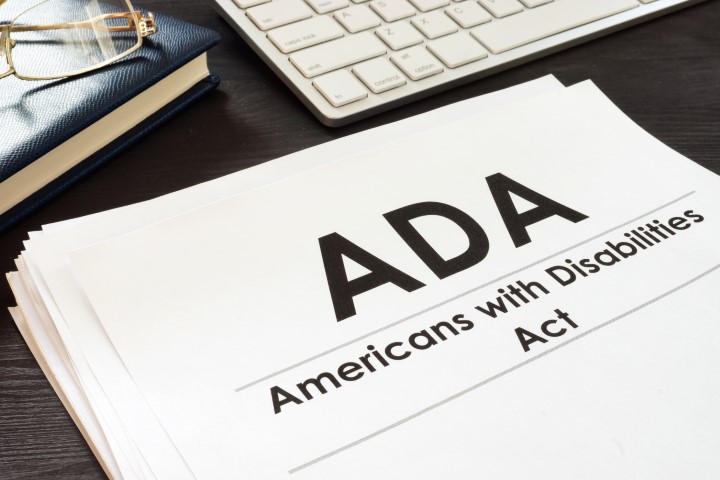In 2019, there have been multiple lawsuits filed over ADA compliance specifically dealing with website accessibility, but the rulings from the court are mixed. While some companies are settling and removing sections from their website that aren’t ADA compliant, other companies are claiming that they don’t know how to ensure that their site is ADA compliant. In fact, oftentimes the court can’t rule against businesses regarding websites that aren’t in line with ADA Title III because there are no explicit instructions for website accessibility in the existing ADA legislation, even after undergoing amendments in 2008.

What is Stated in ADA Title III?
Title III of the ADA applies to owners, lessors, and operators of a “place of public accommodation”. The legislation requires that those mentioned above provide equal access to users who meet the ADA standards for disability, which includes both physical and mental disabilities. Initially, this only applied to physical barriers, as the legislation was created before the rise of the internet. Therefore, there is no explicit section of the ADA Title III as it related to websites.
But clearly, things are changing…
While there is isn’t a clear statement related to websites, considering the fact that the majority of individuals make purchases online, it seems logical that the concept of equal accessibility should apply to websites. It’s true that many courts across the country have ruled that commercial websites are places of public accommodation – meaning, they are subject to ADA rules. However, as we stated earlier, other rulings go against this notion as certain courts determined that the ADA as written does not specifically apply to online users.
The Bottom Line
Even though the rulings are inconsistent, businesses should be ensuring that their websites are ADA-compliant. First, this will avoid any serious lawsuits against the company and negative press related to inaccessibility. Second, as we live in an age of inclusiveness, it is important to ensure that all website users have the right to the full online experience.
In Europe and other nations around the world, the World Wide Web Consortium’s Web Content Accessibility Guidelines (WCAG) are applied to business websites. Even though these specific standards aren’t required in the United States, some courts that have ruled against businesses with inaccessible websites provided the WCAG standards as a guideline for companies to ensure that there is no question about whether their sites are ADA-compliant.
The Major Factors to Consider
Below we list some of the common problems Skyrush Marketing has seen with website accessibility related to the perceivable and operable guidelines, and how to address them according to WCAG:
- Non-Text Content: All non-text content should have a text alternative which should serve the same purpose. For instance, if the form of CAPTCHA is non-text, it should have an alternative form must be provided which use output modes for different types of sensory perception to accommodate different disabilities.
- Time-Based Media: WCAG require websites to provide alternatives for prerecorded audio-only and video-only content. For instance, a video should have an equivalent audio file. In addition, prerecorded audio content needs to have captions. One technique that is recommended is to include a note that says “No sound is used in this clip” for video-only clips. Captions should never omit important dialogue or sound effects or fail to identify a synchronized media alternative to text as an “alternative”.
- Adaptable: The content displayed on a website needs to have the ability to be displayed differently without losing the main information or structure. For instance, the content of a highly complex website must be able to adapt to a simpler format. In addition, instructions for understanding and operating the site can’t rely only on sensory characteristics such as shape, size, visual location, orientation, or sound.
- Distinguishable: Websites must be presented in a way that allows users to easily see and hear the content. This involves using readable fonts, using at least 14 point text in images, and ensuring good contrast between text and images.
- Keyboard Accessible: All website functionality should be operable through a keyboard. This involves allowing users to disable keyboard shortcuts that use only letter, punctuation, numbers, or symbols.
- Enough Time: Users must have enough time to read and use the content on the website. If there is a time limit, users should be able to turn this off to ensure adequate time for reviewing the content.
- Seizures and Physical Reactions: Never design content in a way that is known to cause seizures or physical reactions. For example, web pages shouldn’t contain anything that flashes more than three times in any one second period, or flash is below the general flash and red flash thresholds.
- Navigable: Websites must provide multiple ways to help users navigate the site, find content, and determine where they are. Examples of compliance include limiting the number of links on a page, providing ways to navigate to different sections of the content of a web page, and highlighting search terms.
- Input Modalities: Various inputs other than the keyboard should be provided in order to make it easier to operate functionality. One specific example is including text as the name of user interface components with labels including images of text.
These are some of the top guidelines that often get left out in the website development phase. To ensure that your company doesn’t run into legal trouble, it’s best to contact a web development agency with expertise in ADA compliance.
Skyrush Marketing: Proven Success With ADA-Compliance
The web development team at Skyrush Marketing has been developing and redesigning a variety of websites to ensure accessibility for all users with disabilities. We work with all businesses across all industries, including medical, legal, automotive, retail, and B2B. We hold ourselves to the WCAG standards and ensure that all websites meet and even exceed Level A compliance. Learn more about our web development services.
